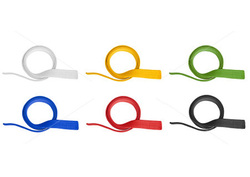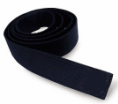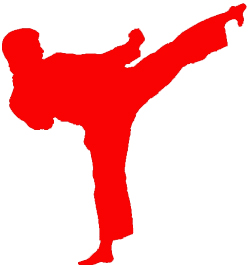Founded by Bruce Lee, JKD is style without style, fighting without fighting, the art of expressing the human body through combat.
Be Like Water
In JKD practitioners must be like water.
Water adapts itself to any container. It's soft and soothing, yet powerful enough to penetrate rock. It flows smoothly without hesitation. The essence of water was the foundation for Bruce Lee's philosophy in life as well as in his creation of JKD.
Once you've wrapped your mind around the idea of adaptation and moving without hesitation, you can now wrap your mind around the fighting elements behind JKD.
JKD focuses on minimal movement with maximum effect and extreme speed.
Minimal Movement
Most street fights only last a handful minutes before a winner is declared. The reason: we get tired.
In JKD, the focus on minimal effort is designed to increase your longevity and strength. If you can outlast the other person, you stand a good chance of winning the fight.
The JKD fighting style is about using different tools in different situations. Teachers have broken it down into four categories: kicking, punching, trapping and grappling, with various techniques flowing smoothly between each.
As you can see by the categories, once people started practicing JKD the essence of the art form instantly began to deteriorate.
In a nutshell, minimal movement means using offense and defense as one.
For example, in a fight you can either block then punch or you can block as you punch. Taking what was originally two moves and merging them into one conserves your energy, thus giving you more stamina during a fight.
No Fixed Forms
In traditional martial arts, practitioners are required to memorize a series of form sets to advance to the next level.
Form sets, or "Kata," are solo enactments of fighting scenarios, and the moves showcase the practitioner's ability to do a variety of techniques such as blocks, punches, kicks, and stances. Form sets are repetitive and rhythmic and do nothing to prepare you for a real fight.
In JKD there are no fixed positions, and Bruce Lee did not stress memorizing solo form sets in JKD training.
Although he did not believe in fixed forms, he wasn't entirely against their use. Using traditional martial arts techniques in actual combat, if the situation warranted, was all part of the JKD philosophy of style without style.
Good Defense Is A Strong Offense
In JKD, speed and strength are everything. The best defense is a strong offense, and JKD teaches using your opponent's momentum against them.
When you jump into water, water doesn't resist. It simply moves with you and then waits for the right moment to crash down. The same can be said for JKD.
Hand-to-hand fighting requires physical contact. In order for an attacker to hit you they must move towards you, thus creating momentum.
Momentum gives you an opportunity to strike. Momentum takes energy to create, and that energy can be redirected if your strike is strong and fast enough.
Straight Lead & Non Telegraphic Punch
The straight lead is the foundation for all punching in JKD.
The straight lead is not a power strike but a strike built for speed. It should always be held loosely, never stiff. This adds to its speed and makes it harder to see and block. It should be tightened up only on impact, adding a snap to your punch.
The straight lead is not only the fastest punch in JKD, but it's also the most accurate. The speed is attributed to the fact that the fist is held closer to the target. Its accuracy is gained from the punch being thrown straight forward from your center line.
The straight lead punch can be thrown from multiple angles and levels, and if used correctly, it will keep your opponent on edge.
Like a cobra, a JKD strike should be felt before it is seen. This means you initiate your punch without any physical or emotional indicators.
Physical indicators are things like tensing your shoulders or moving your feet and body. In JKD the attacks should catch the opponent off guard, throw them off balance, and leave them unable to defend against further attacks.
The key to non-telegraphic punching is that you must keep your body and arms loose, only becoming tense upon impact. There should be no wind-up movements or “get ready poses” before any of your strikes are thrown.
Become a Student
Now that you know the basics of JKD, the next step is to become a student.
Martial arts styles provide more than just techniques. They offer training, theories, and mental attitudes. Learning multiple styles of martial arts allows you to experience a system of totality. Only through learning a system completely will an artist be able to absorb what is useful and discard the rest.
In JKD the choice of what to keep is based on personal experience with various opponents over time. It is not based on how a technique looks or feels or how precisely it mimics tradition. The beauty of JKD is, only you decide what works best for you.


















